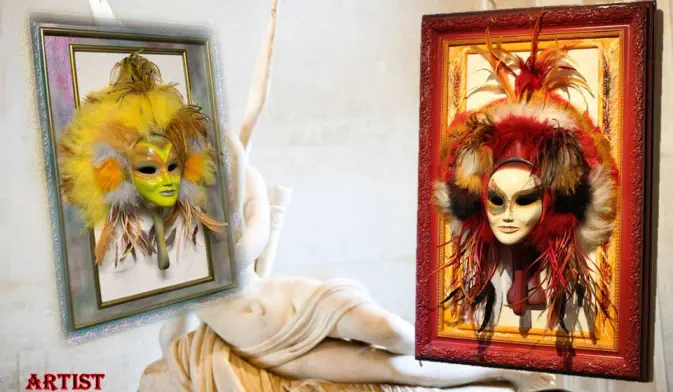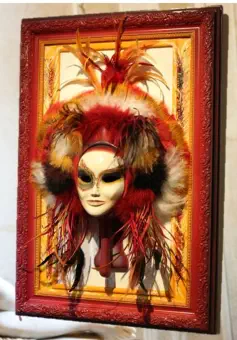


FINE ART
MASKS
BY
TREVOR TRIGG

Mobile (cell) phones weren’t heard of. A computer was a whirring and wheezing
electronic brain that filled a room at the university—and hi-tech, as a descriptor, was a
term yet to be read in newspapers so it had no currency in conversation.
The office calculator was a multi-barrelled gizmo with tab-selected denominator that
reacted to the manual whizzing around of the little handle on the end of the carriage
that you indexed—down one slot—when the bell went “ting”. There was full
employment in Australia (unemployment at one and a half percent) so if you had a
pulse, you could have a job. No-one knew when something was politically incorrect.
And mouse meant rodent. Then, in the 1960s, chemistry and electronics put their
heads up over the parapet and stuff started to be seen as the new thing and hi-tech
started its rush.
Synthetic resin, and the way to reinforce it, was making baby-steps in marine and
automotive after-market applications and I discovered it in a one gallon can with a
parcel of off-cut reinforcing material, sitting in a military disposal store. And it was for
sale, cheap.
A chemical dream product. Reinforced synthetic resins allowed freedom of design and
thus there seemed to be an imperative to have such materials attached to the list of
creative materials that produce style and art. I was hooked.
Within a couple of years I was making custom body parts for cars: hood scoops; rear
deck spoilers and the like, for “speed shop” customers. A range of model boat kits sold
through hobby shops. It was a part-time, spare-time endeavour run out of my mum’s
garage. But, it was time to “get serious” and carve out a career. The 1960s—time to fill
my slot in the universe.
In my late teens I was a cadet in a public company and the development of that
cadetship needed serious consideration to ensure that when those big dollar, lifetime
commitment decisions came along, there would be a salary to keep them afloat. A fork
in the road. A defining moment: the little business got put
aside and studies, at night, were taken up.
Fast forward decades: I became Chief Financial Officer
and Chief Executive Officer—sometimes together—of
manufacturing companies, always keeping a home
workshop and studio and developing technology and
designs for my art and sculptures. In the 1990s my wife
Gloria and I had a gallery where my art sold, sometimes to
international visitors.
And writing……….
I always wanted to write. Banjo Paterson was a hero and his poetry defined a
nation. I had some ballads in me and I wrote them, read them in pubs and
competitions—and published them. They got picked up in anthologies and were read
on the radio.
Large scale action stories and thrillers were my chosen recreational reads. Authors
such as Alistair MacLean (1960s) were favourites. One day—I thought—one day I
should write my book. I already had the story buzzing about in my melon.
In business, there was need to write tens of thousands of words but it was the totally
wrong writing background to carry into action stories. The first manuscript’s draft got
put away for a couple of decades but unlike a good wine or cheese, it didn’t improve
with age. Finally, rewrites and a professional appraisal set the project on course and
the real learning/fixing/wisdom/pruning/primping and pondering got underway and it
bore fruit.
Trevor’s ePublisher provides the following Bio:
Author of LAPEL, Looming August Eighth and now, third book in the series of
Peter Piper thrillers, Lepers on an Ocean of Lies.
Trevor is a shapeshifter and change-maker. Born
in Sydney, his close companion for twenty-five
years was a horse. Horsing around led to him
having a metal and polymer ankle; a bionic man.
After several decades in financial and senior
management (CFO/CEO), the creative muse
remodelled Trevor into an award winning poet
and balladier. All the while, Trevor’s lifelong
interest in art and technology caused him to
maintain a workshop and studio where his
research enabled him to create unique
artwork that sold internationally and through
his own gallery in the 90s.
From his tree-change in Warragul, Trevor
takes a regular sea-change on Raymond Island
where he indulges his love of the water,
messes about in boats and writing.
Boatbuilding has figured in his scarce spare
time, along with playing guitar and tinkering
with his classic 1934 phaeton-bodied car.
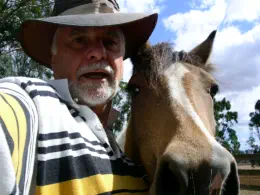
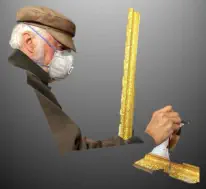
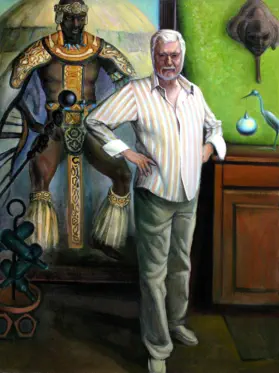
(Oil on canvas by Olga Pasechnikova)
About TREVOR TRIGG
